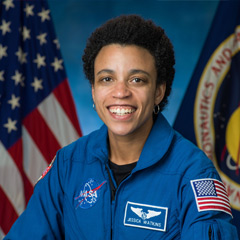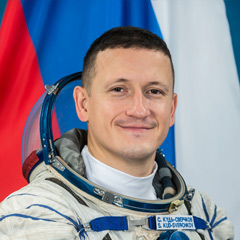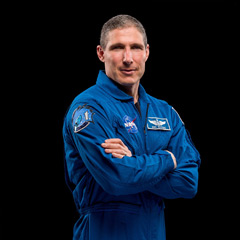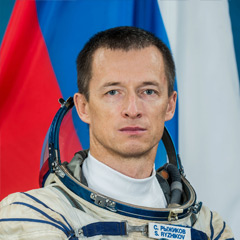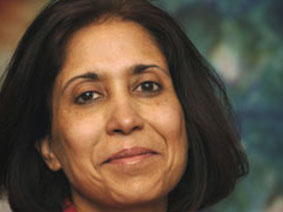
Madhulika Guhathakurta
NASA Astrophysicist
Contents
Personal Essay
As a child growing up in middle-class India, I would drive my father up the wall with my curiosity. “Where do we come from?” I would ask. My father, being more than just a banker (he also was a philosopher and mathematician) would respond to me with reason and logic. “Look at a circle,” he would say. “Can you tell me where the beginning or the end is?”
That would stop me for a while.
When I was in ninth grade, my father wanted me to pursue fine arts, as I was very interested in drawing, painting and singing, with higher mathematics on the side. Even at that tender age, I knew if I did not pursue science in high school, my desire to pursue questions of physics and meta-physics would never be a reality. However, I grew up in a family and a culture where reasoned argumentativeness was not frowned upon, and I was able to convince my father that I should pursue science.
Later on, that circular form of logic from my younger years — as the shape of the sun — in some ways became the gravitational point of my career. After pursuing astrophysics at the University of Delhi, I emigrated to the United States, where I wrote my dissertation on the solar corona, our sun’s extended outer atmosphere.
At NASA, I’ve had the opportunity to do a lot of things that you may call unique. From 1993-1998, at NASA’s Goddard Space Flight Center, I was the project scientist on the White Light Coronagraph (WLC) experiment, which was part of a payload on 5 SPARTAN (Shuttle Pointed Autonomous Research Tool for Astronomy) 201 missions (STS-56, STS-69, STS-77, STS-87, and STS-95). This was a free-flying payload that studied the solar wind and the sun’s corona to increase our knowledge of the sun’s effects on the Earth.
This was truly a unique experience, in that I was able to work in a laboratory for instrument and spacecraft development and also interface with astronauts who were assigned to deploy this payload. In addition, the science from these series of missions and the Ulysses mission established the beginnings of the science of sun-earth connections.
I came to NASA Headquarters in December 1998 to work on the Solar TErrestril RElations Observatory (STEREO) mission. The STEREO mission provides a unique vantage point and perspective that gave us the first three-dimensional view of the Sun – and also had the first women principal investigators on a NASA mission.
Since 2001, I have been the lead program scientist for a program called Living with a Star (LWS), within NASA’s Science Mission Directorate. This program is quite unique in that LWS consists of flight missions, supporting targeted research and technology, and small space environment test beds (orbital laboratories for new LWS concepts) – all with the objective of providing science with societal impact.
The LWS program gave rise to another initiative know as “International Living with a Star” (ILWS) where all the space faring nations of the world came together to cooperate and collaborate on the system science of sun-earth and sun-solar system connections. I served as the chair of this group for a four year period and remain as a member on its steering committee.
With the help of the LWS program, I was able to produce four advanced graduate school level text books, (Heliophysics Volumes I, II, III and IV) published by Cambridge University Press. These are first-of-its-kind text books to articulate the system science that LWS program strives to understand and to address the science of space weather. This new science is called Heliophysics, a unique hybrid of astrophysics and meteorology.
I felt that at NASA, we are so privileged to see, to know, to experience so many things that ordinary people don’t get a chance to experience – for example some of our observations and imagery! I came up with a story line to share the LWS program and show some of the exquisite imageries obtained by many of our observatories. I helped in the creation of two major planetarium shows Cosmic Collisions and Journey to the Stars, in partnership with American Museum of Natural History in New York and National Air and Space Museum in Washington. I also helped in the production of a 3-D IMAX and planetarium show featuring the STEREO mission, called 3D Sun. These shows are running all over the world. Children, general public, older people, are learning something about the cosmos that they had no way of knowing otherwise.
Intergovernmental and international cooperation have shown me that tenacity and negotiation transcend borders and can break down bureaucracy. I would like to reference Indian Nobel Laureate Amartya Sen’s book Argumentative Indian to illustrate that discussion is the only way to discover “the many-sided aspect of truth.” And I continue to use this tool to forge cross-divisional and directorate, interagency and international cooperation.
Finally, I have drawn together the disparate strands of solar-terrestrial physics and enabled national and international cooperation with the ultimate goal of understanding the meteorology of space. A mission close to my heart, Solar Probe Plus, planned for launch in 2018, will even “touch the sun,” contributing to better characterizing and forecasting the radiation environment in which future space explorers will work and live. As such, I hope that all these efforts will help the humankind go from earth-dwellers to space farers.
Biography
As a NASA astrophysicist, Dr. Madhulika Guhathakurta (also known as Lika) has had the opportunity to work as a scientist, mission designer, instrument builder, directing and managing science programs and teacher and spokesperson for NASA’s mission and vision in the Heliophysics Division. Occasionally, she performs all of these roles in a single day. Before joining NASA Headquarters in December of 1998, her career has focused on studying the importance of the scientific exploration of space in particular understanding the Sun as a star and its influence on the planet Earth, with research focus on understanding the magnetohydrodynamics of the Sun’s outermost layer, the solar corona. She has been a Co-Investigator on five Spartan 201 missions on aboard space shuttles (STS-56, STS-64, STS-69, STS-87, STS-95) to study the solar corona in white-light and UV radiation and ten eclipse expeditions. She has led the Living with a Star Program for the past 15 years. LWS focuses on understanding and ultimately predicting solar variability and its diverse effects on Earth, human technology and astronauts in space, also known as “Space Weather” and has been program scientist for STEREO, SDO, Van Allen Probes, Solar Obriter, Parker Solar Probe and other missions. As part of LWS, Dr. Guhathakurta created and managed a theory, modeling and data analysis program to integrate scientific output, data, and models to generate a comprehensive, systems understanding of Sun-Heliosphere-Planets coupling. Dr. Guhathakurta also helped create and led an international initiative known as the International Living With a Star that brings together all the space agencies of the world to contribute towards the scientific goal for understanding space weather. Dr. Guhathakurta is a past co-chair and an active member on the inter-agency group Committee on Space Weather of the National Space Weather Program and helped create Space Weather as permanent agenda item in United Nations Committee on the Peaceful Uses of Outer Space (UNCOPUOS) in 2013. She has partnered with the American Museum of Natural History in New York and NASM in DC to produce full dome planetarium and 3D IMAX shows that are being exhibited internationally and used by teachers to excite the next generation of space scientists and created graduate level textbooks in heliophysics. She is also the lead scientist for the 2017 Eclipse and presently on detail to NASA Ames Research Center exploring concepts for new initiatives. She is presently serving a one year detail at NASA Ames Research Center as the Lead Program Scientist for New Initiatives in the Exploration Technology Directorate. A native of India, Dr. Guhathakurta has a master’s degree in Astrophysics from the University of Delhi and a PhD degree in physics from the University of Denver.




























